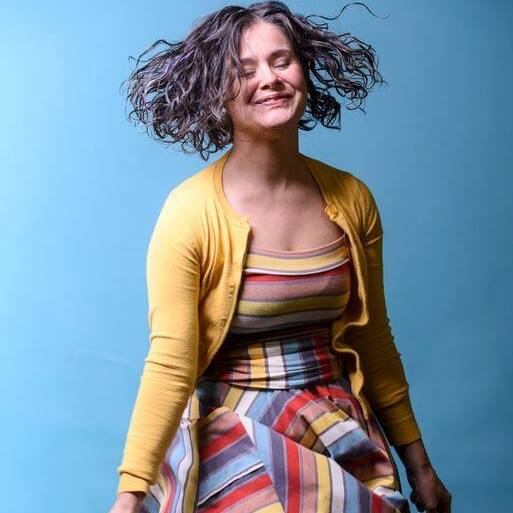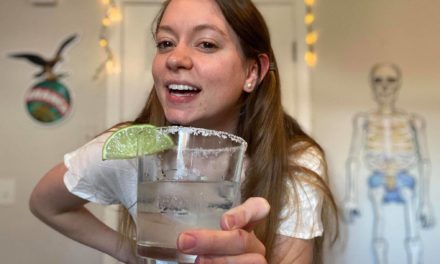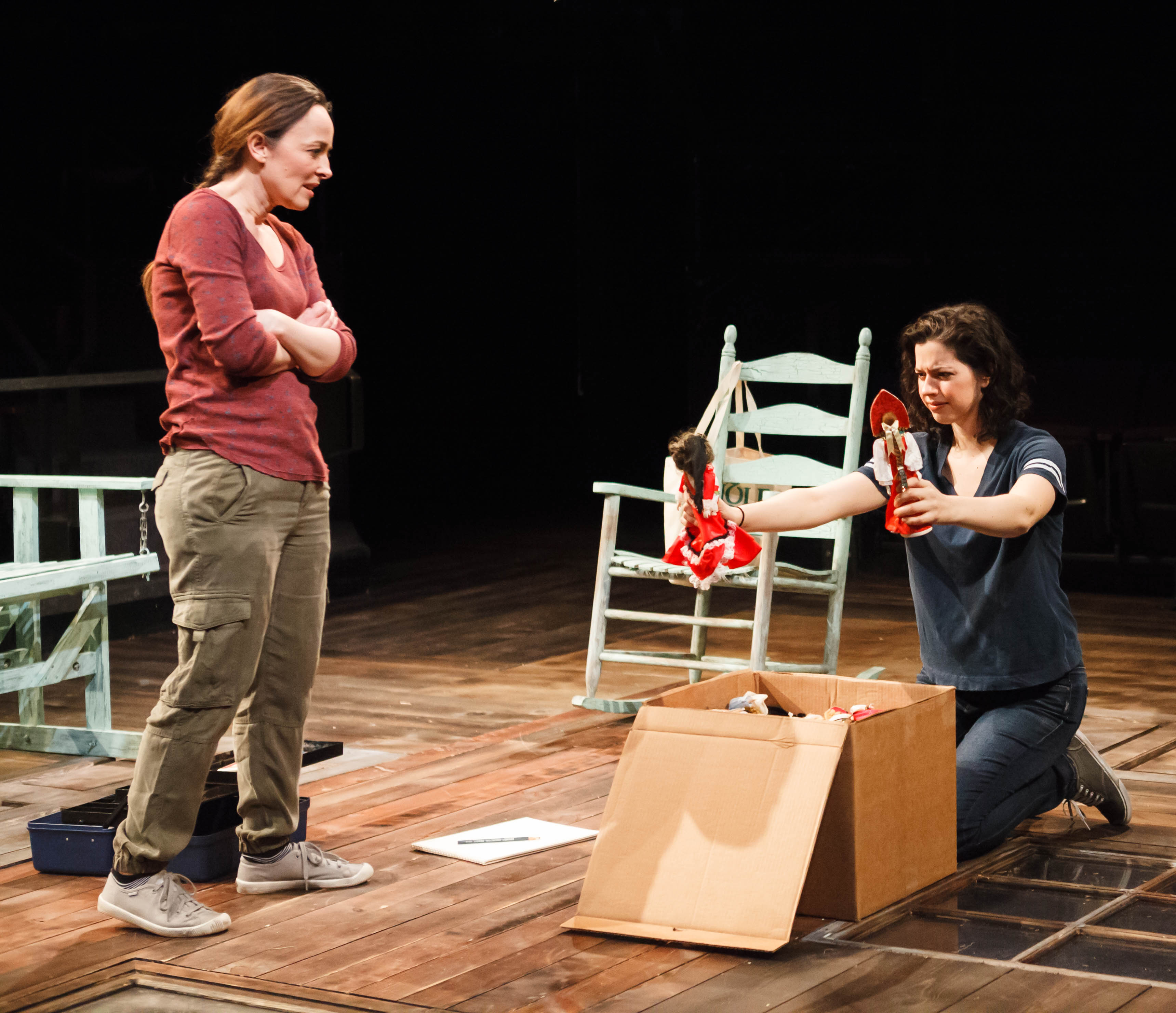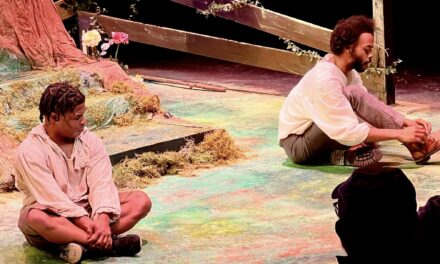Interview by Keith Waits
Entire contents are copyright © 2020 by Keith Waits. All rights reserved.
Dr. Ariadne Calvano is an Assistant Professor of Acting and Movement with the University of Louisville Department of Theatre Arts. She explores movement-based actor training pedagogy in the classroom, as a movement coach and director within the department, and as a professional actor. Her dissertation: The Written Body: A Study of Theatre Movement Language and Pedagogy, examines the evolution of the pedagogy and language of various movement-based actor training approaches. Additional research areas of interest include: interaction with the male gaze and decontextualization of performance images, translation and adaptation studies, and mid-20th century period movement. Her most recent scholarly article titled “What are you Looking at? Complicating the Male Gaze in Fin de Siècle Cancan and Fosse’s Sweet Charity” was published in The Journal of Dance Education Spring 2018 volume. In March 2019 she directed Theatre [502]’s production of Women Laughing Alone with Salad by Shelia Callaghan.
1. What were you working on that was canceled or postponed because of the pandemic?
We had just had a designer run of Milk Like Sugar at UofL the week before everything started to shut down. Sidney Monroe Williams was working their directing fabulousness and the students were finding the kind of work that pulled me into their world in all its gilded and misunderstood glory. I had been consulting on the intimacy for it.
I also had just been contacted by a theatre in Tennessee regarding Intimacy Choreography. I’m mourning the relationship that could have been big time!
2. Tell us about your journey to working in the theatre?
Oh gosh, how much time do you have? The short answer is that I’ve been involved in theatre since I was urged by my 4th-grade teacher to audition for Joseph and the Amazing Technicolor Dreamcoat. It didn’t take much convincing. Every year of elementary school, we were brought to see productions at the local high school and, on special occasions, at Trinity Rep. in Providence, RI. I can still remember the sensations in my chest and stomach as I would watch the performers. Physical responses bubbled up inside and made me want to jump up on the stage with them.
Eventually, I ended up in that same high school and took all the theatre classes and participated in all the productions, in all kinds of ways: acting, technical work, dancing; I wanted to do it all. When I went to undergrad, I didn’t major in theatre right away because my mother didn’t want me to. It wasn’t until I realized that my mom wasn’t paying for school, I was on scholarship. Then I discovered the ability to make my own decisions. I got my first professional theatre job the summer after my freshman year of college at Texas the Outdoor Historical Musical Drama in Palo Alto Canyon. It was not glamourous, but it was professional experience. I worked professionally every summer while in undergrad, spending my final summer, after senior year, in New York City. There’s been no turning back since.
3. You are an academic focusing on acting and movement, but you also have directed outside of the University. How important is it to have an artistic identity outside of the classroom?
Incredibly! In the classroom, my focus is on assisting the actors on their personal artistic journeys, which is one of my favorite aspects of teaching, being a part of that cultivation process; however, those are their journeys. My personal practice helps me continue to explore and evolve my artistic expression and voice. Without my personal practice, my teaching practice would also suffer. How can I expect my students to be curious about their ongoing development if mine has stopped?
4. How did being an Intimacy Director come about, and why is that important?
My first experience with an Intimacy Director was while acting in the Theatre [502] production Nobody Bunny and the Golden Age of Animation by Allie Fireel. They brought out Alicia Rodis who is an amazing Intimacy Choreographer (in theatre) and Intimacy Coordinator (in film). As Alicia introduced the process, part of me related so quickly and easily to the process as it was aspects of theatre training I had been teaching, but didn’t know to call it intimacy, and another part of me was wondering why no one had ever taught me some of this stuff before this moment? After that show, I knew I had to get more training and I’ve been training with IDI and IDC (Intimacy Directors and Coordinators) ever since.
It’s so important because intimacy has, until very recently, been overlooked, ignored, and misunderstood in the performing arts. I want to be sure I articulate that intimacy is not simply physical touch. Most plays have some level of intimate subject matter and intimate character relationships. Having someone in the room to help actors safely navigate the energies that arise from intimate work makes a difference. Intimacy directors are collaborators committed to artistic wellbeing. One of my mentors, Tonia Sina often says Intimacy work is all about creating safe spaces for dangerous work.
5. What is your favorite show you ever worked on?
Oh gee! I think the first thing to know is that I’m a water sign, so I have that kind of fluid malleable sense of favorites and preferences. In the first year of my Master’s Degree at CU Boulder, Joan Schirle from Dell’Arte International was our visiting guest director and instructor for the Commedia Dell’Arte play The Ingenious Chambermaid. Joan’s an AMAZING physical actor and director. I learned a ton as her assistant director and would drop everything in a heartbeat to rush off and work with her again given the chance.
But then, I just directed a version of Anna Deveare-Smith’s Fires in the Mirror at UofL with 8 actors, each playing 3 different roles and the process for that show was so deeply collaborative and we dug deep into the play’s theme, context, and contemporary connection in a way that made me so proud to be working with all those artists both student and faculty. I don’t have words to express that experience, but every rehearsal and every performance continued to move me deep inside my chest.
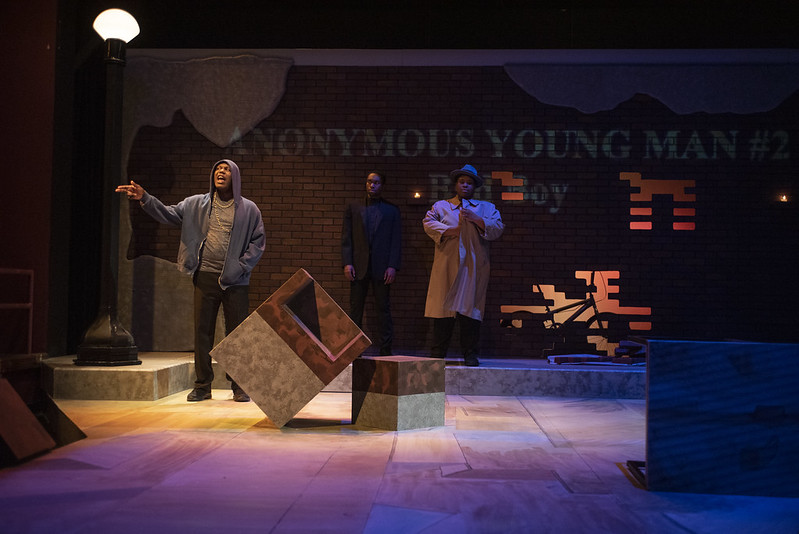
Lamar Hardy, Tyler Tate, & Candace Spencer in Fires in the Mirror at U of L (2019)
Photo: Tom Fougerousse
6. What was the most difficult?
A little-known fact about me is that I used to be a Technical Director at a theatre in Abilene, Texas. I was in my mid-twenties and I am a young-looking woman even now as I approach 40. It was often incredibly frustrating, as some folks, especially white men of a certain age would go over my head as I would lay out the rules and regulations of the space. Ideas that I voiced would be ignored. Actually, much of my work in technical theatre resulted in frustration, which was part of the decision to move away from tech work, that and the heavy toll it takes on the physical body.
7. What shows are on your dream list but have eluded you?
I’ve longed to play Harry Percy (Hotspur) in Shakespeare’s Henriad since I read them in undergrad. If I were a superhero I would be the Hulk — just the Hulk, none of this gendered She-Hulk shit! My secret is I’m always angry. To explore that part of my personality, that I desperately try to keep so deeply hidden by unpacking Harry’s relationship to rage, but also honor (which always seemed deeply Klingon to this Trekkie), and the relationship with his wife which is funny and tender. I’ve been transitioning from acting to directing and intimacy work, but I would jump back on stage for the chance to analyze and embody Hotspur.
I also have a great concept for the musical Sweet Charity. I first proposed it at UofL in 2018 I think. The concept feels even more appropriate in this new COVID reality. I hope you’ll get to see it one day, I would love to hear your thoughts on the concept actually, Keith.
8. If you couldn’t do theatre, what would you be doing?
It would definitely need to be something in motion. A friend once described me as a kinetic being and I have adopted that description with pride. Somatic therapy interests me. If I had known about that as a possible field when I was in my undergraduate degree, I might not be here talking with you right now. The human body fascinates me and no matter what I would always be doing something that helps me continue to explore the body and movement.
9. Besides Louisville, what other places have you worked?
All over, Massachusetts, Rhode Island, Maine, New York, Texas, Colorado, the most fun of all though was Northern Japan.
10. What has been your quarantine playlist?
This changes day-to-day – I’ve been on a strong Philip Glass kick this week – especially his work as performed by Kronos Quartet and the Mishima Soundtrack. I tend to prefer music without lyrics.
11. What book is on your bedside table now?
I just finished Nino Cipri’s Finna. If you enjoy Sci-Fi novels (although I might classify it as a novella) you should check it out. It takes place in a big box store and there are wormholes to other dimensions. They don’t waste a word in their writing, and I found myself laughing out loud often.
12. What is the first thing you will do when you come out of quarantine? As a member of a high-risk group, I’m having a hard time thinking about coming out of quarantine. I hope that when it is safe to come out of quarantine I will be spending time with my friends and family in the Louisville arts community.
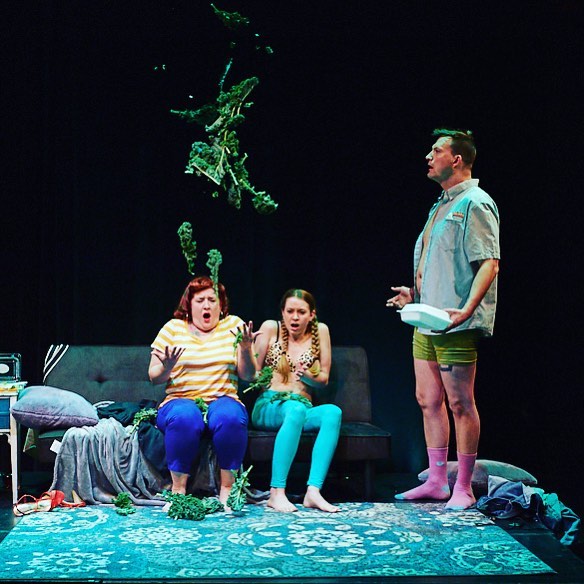
Jessica May, Gracie Taylor, & Allie Fireel in Women Laughing Alone Eating Salad
for Theatre [502] (2019)
Keith Waits is a native of Louisville who works at Louisville Visual Art during the days, including being the host of LVA’s Artebella On The Radio on WXOX 97.1 FM / ARTxFM.com, but spends most of his evenings indulging his taste for theatre, music and visual arts. His work has appeared in LEO Weekly, Pure Uncut Candy, TheatreLouisville, and Louisville Mojo. He is now Managing Editor for Arts-Louisville.com.

